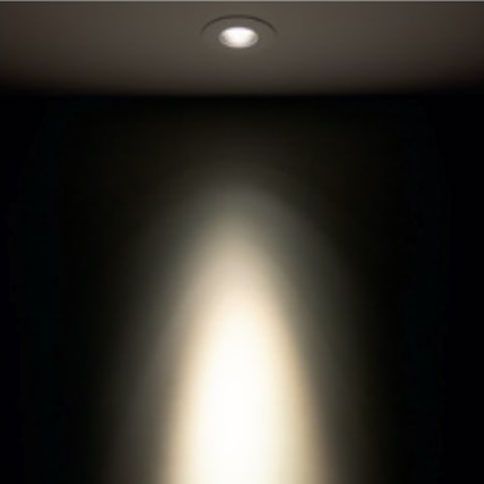Beam Angles Explained

Keeping it simple - what is beam angle?
The beam angle is a measure of light spread from the source, such as a light bulb. Broader beam angles will result in more spread-out light, but the light will also be less intense. Vice Versa, narrow angles will have less spread by the higher light intensity.



In the detail - what is beam angle?
There are two methods of referencing a beam angle. One uses angles in degress, like 10°, 60°, 120°, etc. Another uses terminology like narrow, spot, wide, wider angle, etc.
The terminology and standards for beam angles are not universal, but the NEMA classification is the most commonly used one. NEMA is the National Electrical Manufacturers Association, the largest association of electrical equipment manufacturer.
| Beam Angle (°) | NEMA Type | Description |
|---|---|---|
| 10-18° | 1 | Very Narrow |
| 18-29° | 2 | Narrow |
| 29-46° | 3 | Medium Narrow |
| 46-70° | 4 | Medium |
| 70-100° | 5 | Medium Wide |
| 100-130° | 6 | Wide |
| 130° or more | 7 | Very Wide |
In the detail - what is beam angle?
The beam angle explained
The fact of the matter is that every single light source – from the simplest candle to an LED light – will have a beam angle. Basically, the beam angle is the measurement of the light's distribution. Just to give you a better idea: a standard light bulb will have a beam of about 360 degrees, and this means that the light shining from it will surround the area, but will not be very intense. Some types of lighting will have narrower beam angles than others, which results in more intense lighting, and this includes downlights, especially GU10 LED ones. The beam of such lights will often be approximately 40 degrees or thereabouts, with the beam angle not being more than 5 degrees more than the standard in the industry.
The facts on selecting lights with wider beam angles
If you select a light that has a wider or broader beam angle, you do not necessarily benefit from a brighter light – you simply benefit from light that is more spread out. The brightness is still the same, although the intensity of the beam will increase. The brightness is measured in lumens, whilst the intensity is referred to in candelas. One of the aspects you should remember is that if you choose a broader beam angle, the light from it will not be that intense, and the centre of the light beam will not reach as far, either. By selecting the proper beam angle, the lighting can make a bigger impact in a room.
One other fact you should know is that it is not just about wider beams or narrower beams – the distance from one light to another will also have an impact. If you choose four lights with 40-degree beams and place them two metres apart in a room, you may well end up with a dark, dim area in the middle of the room. You may think, “Okay, I'll install lights with wider beams.” But this solution would not necessarily work, either. Even if you install four lights with 60-degree beams in the room, you may still have that dark, unlit area right in the middle. What then is the solution? It is simple: rather than just use 4 downlights, increase the number of downlights to 9 so that you can have better light uniformity.
Where to use lights with broader beam angles
If you choose a light with a narrow beam angle – as little as 25 degrees, for example – it is referred to as a spot. If you choose lights with broader beam angles of about 60 degrees, they are referred to as flood lighting. So now, the big question is: where are the best places to use lights with different beam angles?
Well, for one, think of a lounging area. Lounging areas are perfect for wider beam angles since the area does not need to be too bright – the usual tasks performed in a lounge area include such tasks as watching television, relaxing, or reading, so you do not need lighting that is too focused or intense. On the other hand, narrower beams (around 25 degrees) are often better suited to rooms with higher ceilings, such as a library or a study room. For all the other rooms in your home or office, lights with beam angles between 35 degrees to 45 degrees will usually be suitable, but this would also depend on the light's spacing and its application.
Beam Angles by Angle (°)
Search our website by specific beam angles below:



